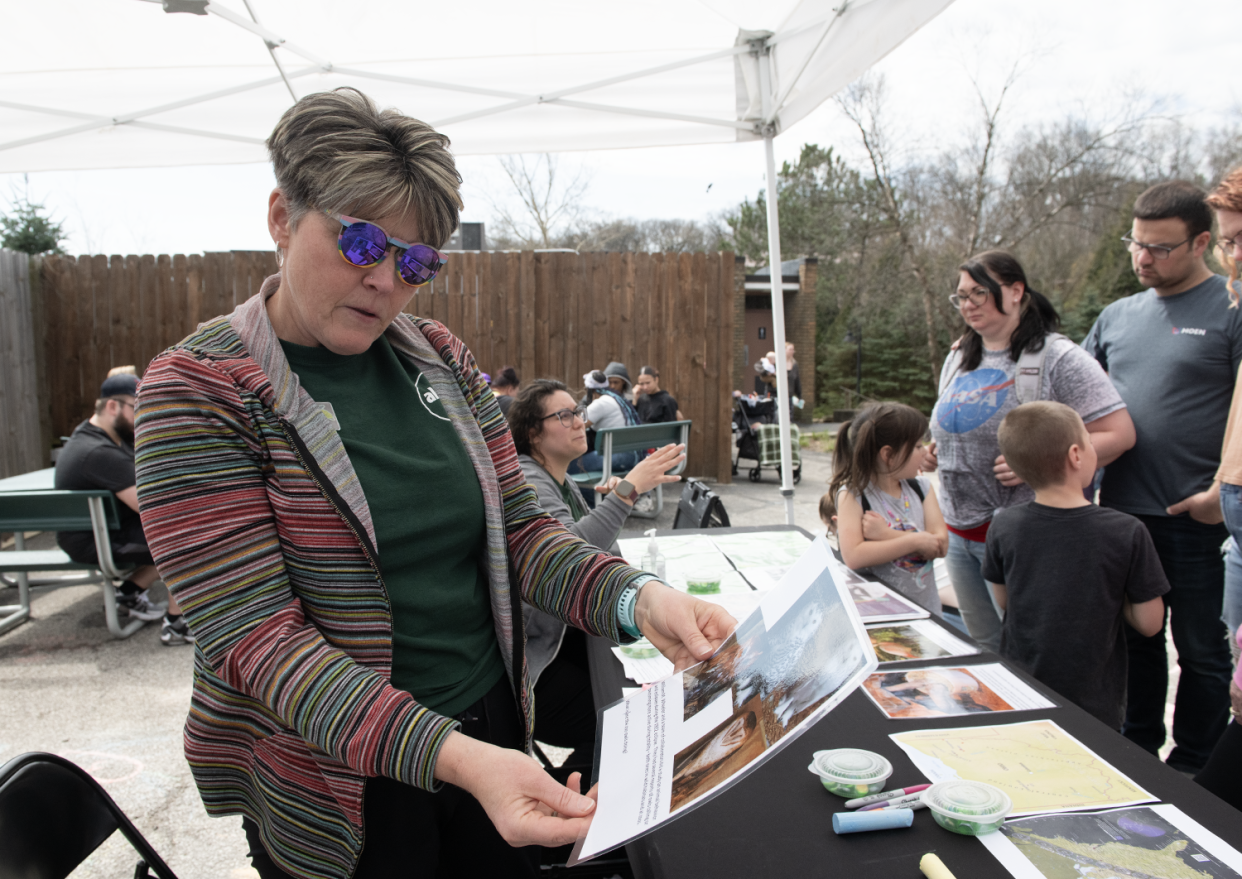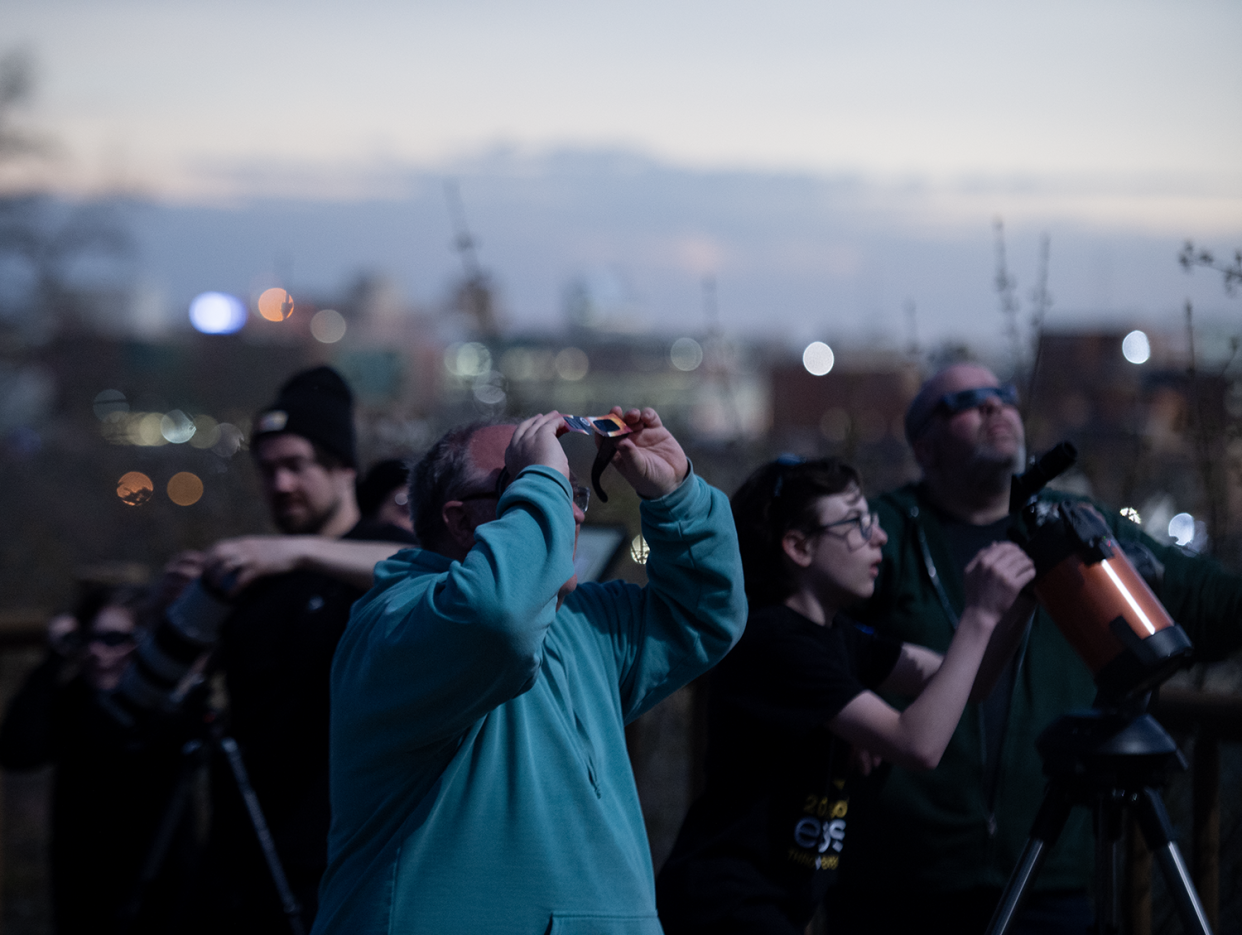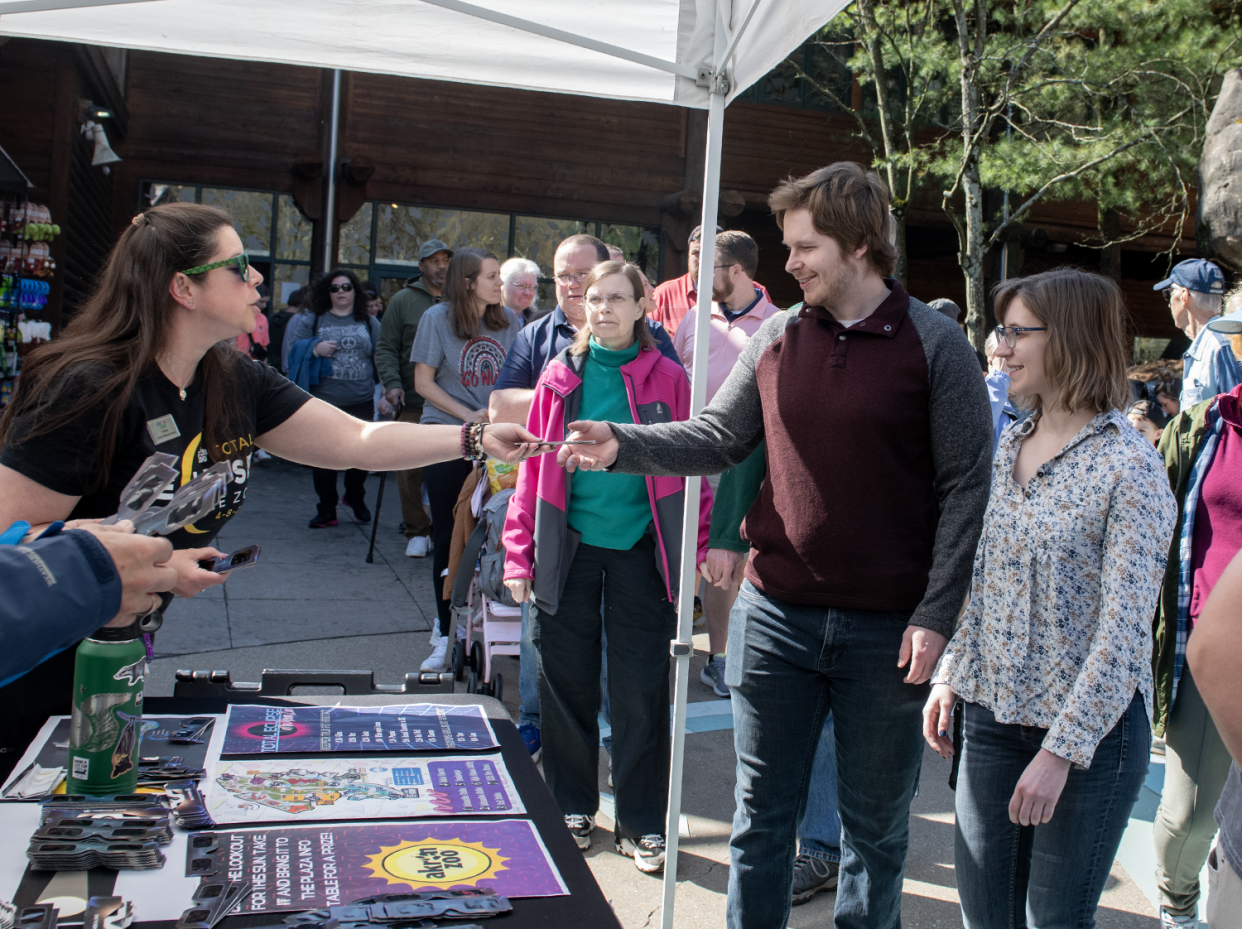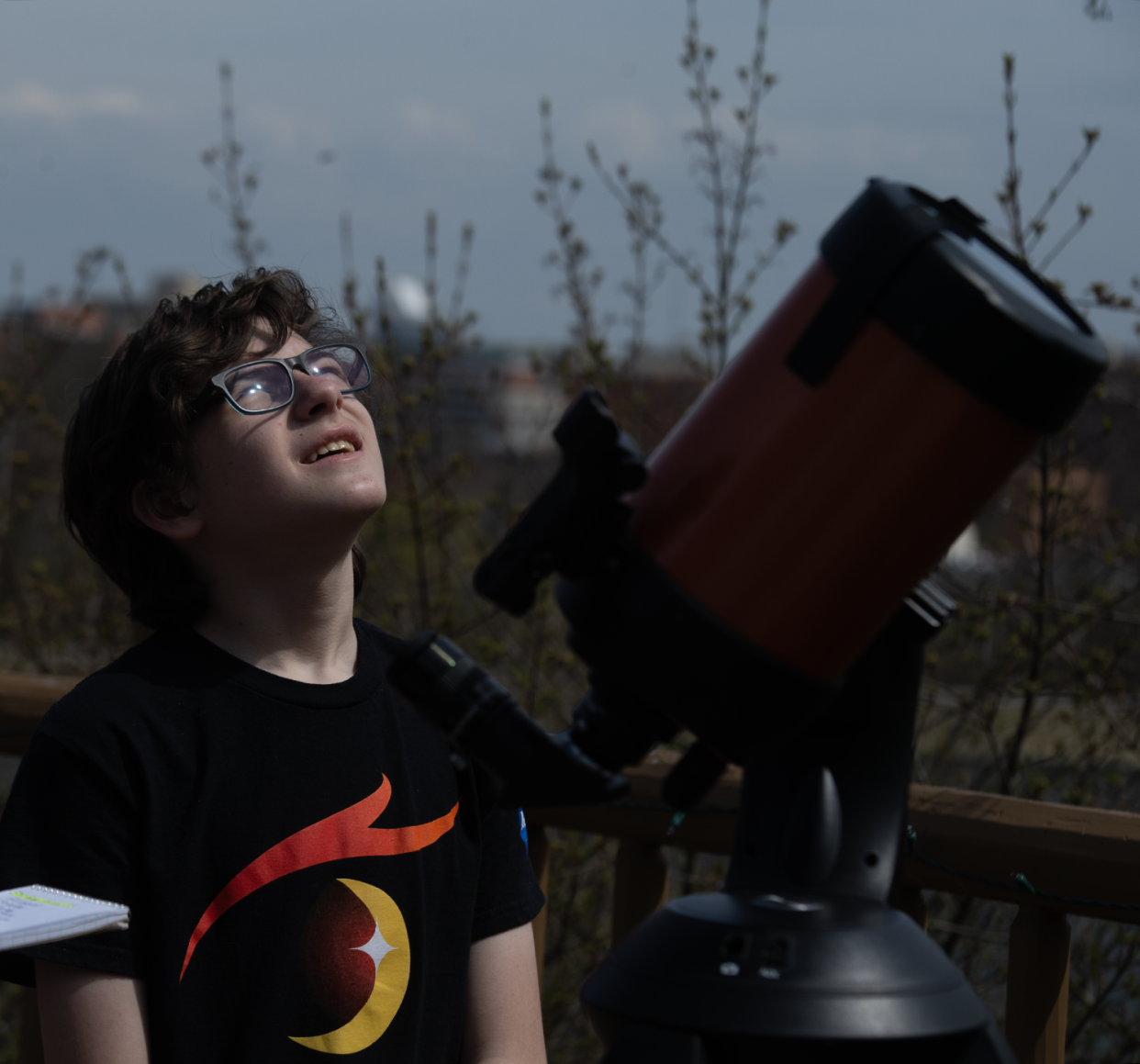It's a dazzling day for science as eclipse brings researchers of all ages to Akron Zoo

A group of citizen scientists were on the ground Monday at the Akron Zoo, ready to document the effects of the total solar eclipse through two NASA-led experiments.
The first experiment, the Eclipse Soundscapes Project, aimed to enlist zoogoers in recording animals' reactions during the eclipse.
"It's kind of mimicking a study that was done in the 1932 eclipse," said Carrie Bassett, the zoo's education mission manager. "So, they want to see if anything's changed, or what animals may be doing across the United States today. It's a really cool program where we're going to ask the guests to do observations using their eyes, their ears, even their sense of smell to see if anything changes throughout the period of when the eclipse starts — especially during totality — and then when the eclipse completely ends."
Bassett said the zoo's diurnal animals might act like it was bedtime, and that the nocturnal critters might decide it's time to wake up.
Nearby the snowy owl exhibit, two staff members, education specialist Angie Walsh and education coordinator Abby Sipos, were talking to people about the soundscapes project.
Walsh said most of the people she and Sipos had spoken with were from out of town.
"I think a lot of local people are probably staying at home in their backyards, hanging out, trying to stay out of traffic and stuff," said Walsh.
A similar trend emerged at the booth nearby the red pandas, where education mission coordinator Amy Moehring and volunteer Sandy Strabley were talking to people about the second experiment, the Globe Observer project. Most of the people they'd spoken to were from out of town, too. Strabley said they'd seen people from Virginia, Maryland, Michigan and Pennsylvania.
Their job was to have guests take note of the temperature and the time and record their observation on a graph. Guests were also encouraged to use the GLOBE Eclipse app to keep track of air temperature and clouds.
"It dropped about 12 degrees during a half-hour period," Moehring said, a little more of a drop than the anticipated 10 degrees.
The results from both experiments are being reported back to NASA.
"We're very excited," Bassett said, "because we don't really know what to expect, so we're really excited. That's the whole point of science, is to teach us what is going on in the world around us."
Observations, proposals and stargazing

Jody Hahn and her children — 11-year-olds Cooper and Wyatt, and 8-year-old Dakota — were in town from Mount Wolf, Pennsylvania.
Hahn said the family took a post-COVID zoo tour three years ago, visiting seven zoos in nine days. Akron was their second stop.
"This is our favorite little zoo," she said. "When we found out that there'd be totality here, I bought the tickets months ago."
Cooper said that during the eclipse, one of the river otters he saw was swimming around in a repetitive pattern before totality. Cooper Wyatt said that just before and during totality, the swimming otter got out of the water to check on one of its comrades, asleep in a log, before returning to swimming for the rest of the eclipse.
Dakota said that the grizzly bears she saw slept through the entire eclipse.
"The bear that was sleeping in the cave twitched its head, but nothing else," Dakota said.
Megan Seivert and Shane Haller were in town from Pittsburgh. Seivert, an Ohio native, said she didn't know there was going to be an eclipse until about a month and a half ago. When she saw that the Akron Zoo was holding an event, she and Haller got tickets.

Both were excited for the rare chance.
Unbeknownst to Seivert, Haller was planning to propose during the eclipse. In the midst of totality, near the zoo's carousel, he popped the question and she said yes.
Seivert said that they've been together for a while and that they'd had conversations about getting married before, but she didn't know when or where Haller had planned on proposing.
"It's a once-in-a-lifetime thing," Seivert said. "Super romantic."
Meanwhile, near the aviary, another citizen scientist, 13-year-old Mayson Howell, had his telescope set up and pointed at the sun, ready to conduct his own research.
Howell traveled from Missouri back to Ohio, his home state, to see the eclipse. Three years ago, he and his family traveled to South Carolina to view the 2017 annular eclipse, an event he vaguely remembers.

"I do remember it going dark," he said. Howell also remembers the birds getting louder and crickets beginning to chirp.
"I enjoy space, and I enjoy science quite a bit," he said. He's contemplating a career in STEM — space science, specifically; maybe something with NASA.
After the eclipse, Howell was visibly enthusiastic about what he'd just seen, saying, "That was crazy."
"Someone broke the sky," he said. "I've heard that before, and then I saw it — perfect sentiment. Someone broke the sky."
Contact reporter Derek Kreider at DKreider@Gannett.com or 330-541-9413.
This article originally appeared on Akron Beacon Journal: Akron Zoo guests have field day with eclipse research experiments
